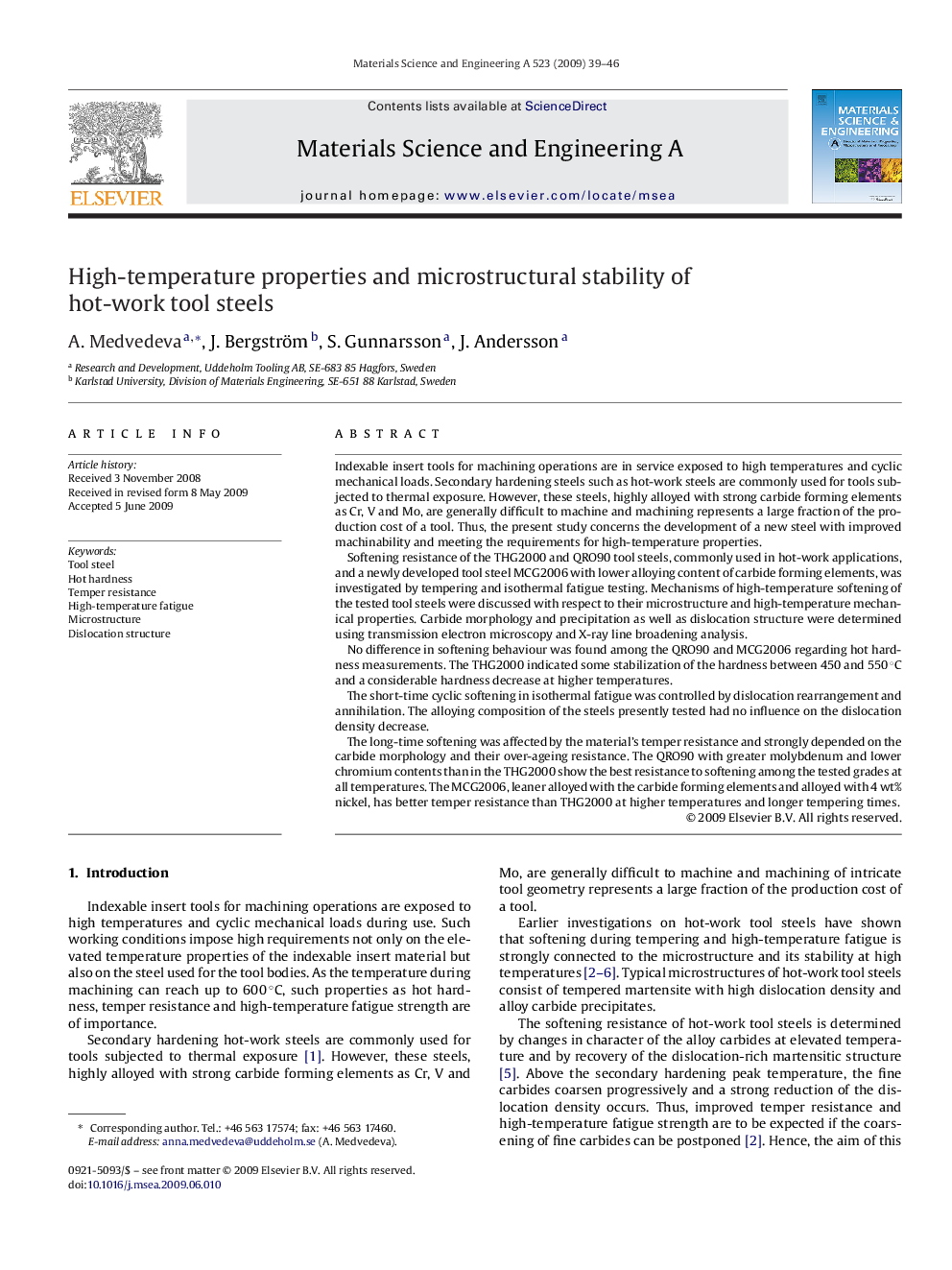| کد مقاله | کد نشریه | سال انتشار | مقاله انگلیسی | نسخه تمام متن |
|---|---|---|---|---|
| 1579980 | 1514838 | 2009 | 8 صفحه PDF | دانلود رایگان |

Indexable insert tools for machining operations are in service exposed to high temperatures and cyclic mechanical loads. Secondary hardening steels such as hot-work steels are commonly used for tools subjected to thermal exposure. However, these steels, highly alloyed with strong carbide forming elements as Cr, V and Mo, are generally difficult to machine and machining represents a large fraction of the production cost of a tool. Thus, the present study concerns the development of a new steel with improved machinability and meeting the requirements for high-temperature properties.Softening resistance of the THG2000 and QRO90 tool steels, commonly used in hot-work applications, and a newly developed tool steel MCG2006 with lower alloying content of carbide forming elements, was investigated by tempering and isothermal fatigue testing. Mechanisms of high-temperature softening of the tested tool steels were discussed with respect to their microstructure and high-temperature mechanical properties. Carbide morphology and precipitation as well as dislocation structure were determined using transmission electron microscopy and X-ray line broadening analysis.No difference in softening behaviour was found among the QRO90 and MCG2006 regarding hot hardness measurements. The THG2000 indicated some stabilization of the hardness between 450 and 550 °C and a considerable hardness decrease at higher temperatures.The short-time cyclic softening in isothermal fatigue was controlled by dislocation rearrangement and annihilation. The alloying composition of the steels presently tested had no influence on the dislocation density decrease.The long-time softening was affected by the material's temper resistance and strongly depended on the carbide morphology and their over-ageing resistance. The QRO90 with greater molybdenum and lower chromium contents than in the THG2000 show the best resistance to softening among the tested grades at all temperatures. The MCG2006, leaner alloyed with the carbide forming elements and alloyed with 4 wt% nickel, has better temper resistance than THG2000 at higher temperatures and longer tempering times.
Journal: Materials Science and Engineering: A - Volume 523, Issues 1–2, 15 October 2009, Pages 39–46